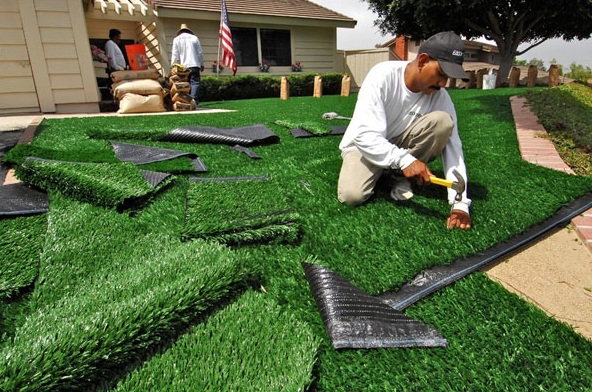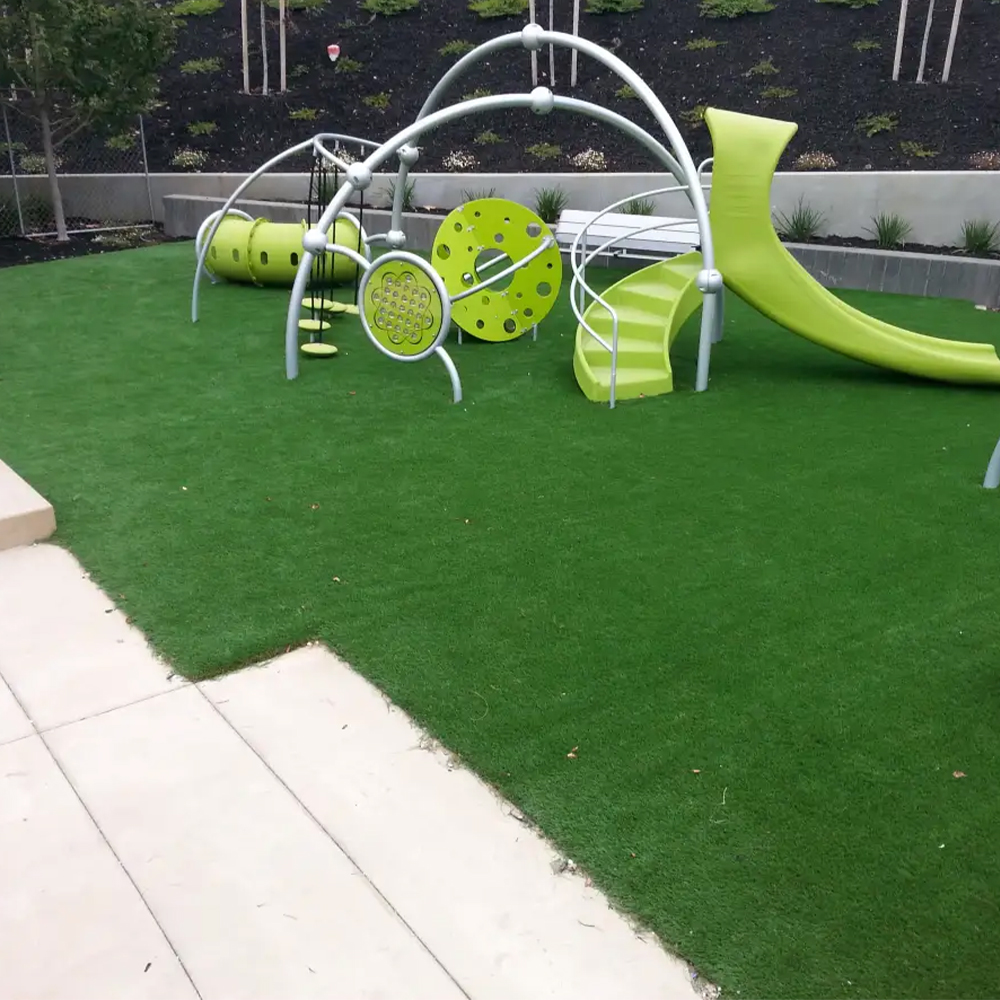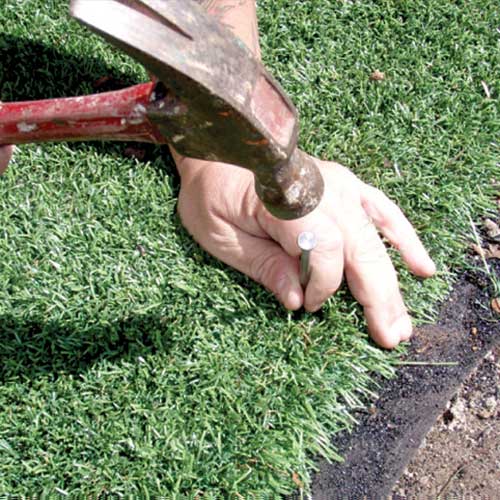Premium Arizona Turf Solutions for a Attractive and Lush Landscape
Premium Arizona Turf Solutions for a Attractive and Lush Landscape
Blog Article
Look Into the Environmental Conveniences of Opting for Artificial Grass Solutions
The adoption of synthetic grass solutions offers an engaging possibility to attend to pushing environmental difficulties. By significantly minimizing water usage and reducing the application of damaging chemicals, these alternatives not only advertise lasting landscape design but also shield neighborhood environments. The reduced carbon impact associated with lowered upkeep activities adds to a more lasting strategy to land monitoring. The effects of these advantages prolong past mere preservation efforts, elevating inquiries regarding their long-term effect on environment conservation and overall environmental balance. Checking out these dimensions reveals a complicated interaction worth thinking about.
Water Preservation Conveniences
One of the most substantial benefits of synthetic grass is its capacity to conserve water. Conventional yard lawns need significant irrigation, especially in locations prone to dry spell or water limitations. In comparison, synthetic grass does not need watering, substantially reducing the overall demand for water resources. This function is particularly advantageous in arid areas where water shortage is a pushing worry.
By eliminating the requirement for normal watering, synthetic grass adds to lasting landscape techniques and assists alleviate the environmental impact of too much water intake. Additionally, the conservation of water extends to the decrease of drainage, which can result in dirt disintegration and waterway air pollution.
Furthermore, the installment of artificial lawn permits home owners and communities to allot water resources extra effectively, concentrating on vital uses such as drinking water and farming. The shift in the direction of artificial lawn not just promotes liable water use however also lines up with broader environmental goals targeted at preserving natural deposits.
As areas significantly focus on sustainability, the water preservation advantages of synthetic grass provide a compelling instance for its fostering in residential and commercial landscaping projects.
Decreased Chemical Usage
The shift to synthetic grass considerably reduces the dependence on chemical therapies frequently utilized in natural yard upkeep. Standard grass monitoring usually entails the application of chemicals, herbicides, and plant foods to advertise development and control pests. These chemicals can posture dangers to human health and wellness, neighborhood wild animals, and the environment, adding to soil and water contamination.
In contrast, fabricated turf removes the demand for these dangerous materials. By minimizing the launch of synthetic substances right into the ecological community, artificial turf promotes healthier soil and water systems.
In addition, the lack of chemical drainage related to synthetic grass setups helps protect neighborhood rivers from air pollution, supporting aquatic life and maintaining biodiversity. Arizona artificial turf. As areas significantly focus on sustainable practices, choosing synthetic grass presents a viable option that lines up with ecological conservation objectives. Via this change, homeowner can take pleasure in rich environment-friendly rooms without endangering ecological wellness, paving the way for a more sustainable future
Lower Carbon Impact

In addition, the setup of synthetic grass can lead to substantial water conservation. All-natural yards require significant quantities of water for watering, which not see this only includes in the carbon impact linked with water extraction and treatment however also strains neighborhood water sources. On the other hand, fabricated grass requires very little upkeep, requiring no watering, therefore dramatically lowering water usage and its connected energy costs.
Furthermore, the long life of synthetic grass adds to its lower carbon influence. With a life expectancy of as much as 15 years or even more, the need for constant replacements is reduced, leading to much less waste and reduced energy consumption in manufacturing and dealing with traditional yard options. Overall, synthetic grass offers a lasting choice for eco mindful landscape design.
Habitat Preservation
Environment preservation is an essential consideration in the dispute over landscaping options, particularly when comparing synthetic grass to natural yard. Natural lawn lawns commonly need comprehensive upkeep, consisting of making use of pesticides, herbicides, and plant foods, which can negatively influence neighborhood ecosystems. These chemicals can leach right into the soil and rivers, hurting native plants and animals and interfering with local habitats.
Man-made turf eliminates the requirement for dangerous chemicals, thus shielding close-by wildlife and keeping the stability of bordering communities. The setup of artificial turf can lead to the conversion of previous yard areas right into more biodiverse landscapes, such as pollinator gardens or indigenous plant locations, which can support regional wild animals.
Inevitably, the shift to synthetic grass not only preserves water and minimizes maintenance efforts however also fosters a more harmonious connection between human activities and the native environment, advertising habitat preservation while doing so.
Long-Term Sustainability
Lasting sustainability is an important consider evaluating the advantages of man-made turf over standard grass lawns. One of one of the why not look here most substantial advantages of synthetic grass is its longevity; it can last as much as 15-20 years with very little upkeep, whereas natural turf needs regular reseeding and replacement. This durability lowers the demand for continuous sources, such as water, plant foods, and pesticides, which are vital for maintaining a healthy and balanced yard yard.
Furthermore, synthetic grass adds to a decrease in carbon emissions related to lawn treatment tools. Traditional yards often require gas-powered mowers, trimmers, and blowers, all of which contribute to air contamination. Turf installation phoenix az. In contrast, synthetic grass gets rid of the need for such devices, advertising a cleaner setting
Furthermore, the manufacturing of synthetic grass significantly makes use of recycled materials, enhancing its sustainability profile. As makers adopt eco-friendly methods, the environmental footprint of artificial grass continues to decrease.

Verdict
The fostering of man-made lawn remedies presents substantial ecological benefits, including significant water conservation, decreased reliance on harmful chemicals, and a reduced carbon impact. In addition, synthetic lawn aids in protecting all-natural habitats by lessening land disruption and advertising long-term sustainability via making use of sturdy materials. Jointly, these variables emphasize the capacity of synthetic turf to add positively to environmental health and provide a practical option to conventional landscaping techniques in an increasingly resource-conscious world.
In comparison, fabricated turf does not require watering, significantly reducing the total need for water resources. By minimizing the release of synthetic substances right into the environment, man-made lawn advertises much healthier dirt and water systems.
Moreover, the installation of artificial lawn can result in substantial water conservation. In comparison, fabricated grass needs minimal upkeep, calling for no watering, therefore significantly reducing water usage and its linked energy prices.

Report this page